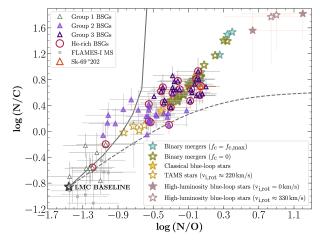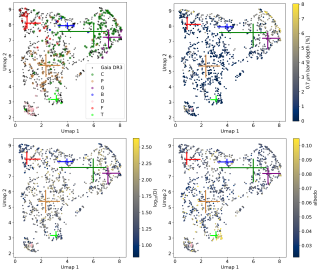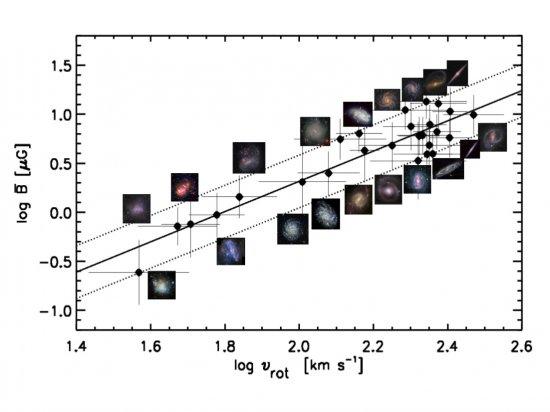Magnetic fields are present on all scales in the Universe from planets and stars to galaxies and galaxy clusters, and even at high redshifts. They are important for the continuation of life on the Earth, the onset of star formation, the order of the interstellar medium, and the evolution of galaxies. Hence, understanding the Universe without understanding magnetic fields is impossible. The origin and evolution of cosmic magnetic fields is among the most pressing questions in modern astronomy. The most widely accepted theory to explain the magnetic fields on stars and planets is the α-Ω dynamo theory. This describes the process through which a rotating, convecting, and electrically conducting fluid can maintain a magnetic field over astronomical timescales. On larger scales, a similar dynamo process could produce coherent magnetic fields in galaxies due to the combined action of helical turbulence and differential rotation, but observational evidence for the theory is so far very scarce. Putting together the available data of non-interacting, non-cluster galaxies with known large-scale magnetic fields, we find a tight correlation between the strength of the large-scale magnetic field and the rotation speed of galaxies. This correlation is linear assuming that the number of cosmic-ray electrons is proportional to the star formation rate, and super-linear assuming equipartition between magnetic fields and cosmic rays. This correlation cannot be attributed to an active linear α-Ω dynamo, as no correlation holds with global shear or angular speed. It indicates instead a coupling between the large-scale magnetic field and the dynamical mass of the galaxies. Hence, faster rotating and/or more massive galaxies have stronger large-scale magnetic fields. The observed correlation shows that the anisotropic turbulent magnetic field dominates the large-scale field in fast rotating galaxies as the turbulent magnetic field, coupled with gas, is enhanced and ordered due to the strong gas compression and/or local shear in these systems. This study supports a stationary condition for the large-scale magnetic field as long as the dynamical mass of galaxies is constant.
Advertised on
References
It may interest you
-
 Massive stars, those over ten times heavier than our Sun, are the conduits of most elements of the periodic table and drive the morphological and chemical makeup of their host galaxies. Yet the origin of the most luminous and hottest stars among them, called 'blue supergiants', has been debated for many decades. Blue supergiants are strange stars. First, they are observed in large numbers, despite conventional stellar physics expecting them to live only briefly. Second, they are typically found alone, despite most massive stars being born with companions. Third, the majority of them harbourAdvertised on
Massive stars, those over ten times heavier than our Sun, are the conduits of most elements of the periodic table and drive the morphological and chemical makeup of their host galaxies. Yet the origin of the most luminous and hottest stars among them, called 'blue supergiants', has been debated for many decades. Blue supergiants are strange stars. First, they are observed in large numbers, despite conventional stellar physics expecting them to live only briefly. Second, they are typically found alone, despite most massive stars being born with companions. Third, the majority of them harbourAdvertised on -
 Asteroids are the remnants of the planetary formation in the Solar System and so, their study helps us to understand the conditions during the early stages of the formation of our planetary system. Among asteroids, those classified as primitives present similar spectra to that of carbonaceous chondrites, i.e., they are rich in carbon and organic compounds and silicates altered by the presence of liquid water (phyllosilicates). Primitive asteroids are well characterized in various wavelength regions, showing their most diagnostic feature at 3μm. However, there is a lack of information in theAdvertised on
Asteroids are the remnants of the planetary formation in the Solar System and so, their study helps us to understand the conditions during the early stages of the formation of our planetary system. Among asteroids, those classified as primitives present similar spectra to that of carbonaceous chondrites, i.e., they are rich in carbon and organic compounds and silicates altered by the presence of liquid water (phyllosilicates). Primitive asteroids are well characterized in various wavelength regions, showing their most diagnostic feature at 3μm. However, there is a lack of information in theAdvertised on -
 There is increasing evidence that single-star evolutionary models are unable to reproduce all of the observational properties of massive stars. Binary interaction has emerged as a key factor in the evolution of a significant fraction of massive stars. In this study, we investigate the helium (Y(He)) and nitrogen surface abundances in a comprehensive sample of 180 Galactic O-type stars with projected rotational velocities of ≤150 km/s. We found a subsample (~20% of the total, and ~80% of the stars with Y(He) ≥ 0.12) with a Y(He) and nitrogen abundance combined pattern that is unexplainable byAdvertised on
There is increasing evidence that single-star evolutionary models are unable to reproduce all of the observational properties of massive stars. Binary interaction has emerged as a key factor in the evolution of a significant fraction of massive stars. In this study, we investigate the helium (Y(He)) and nitrogen surface abundances in a comprehensive sample of 180 Galactic O-type stars with projected rotational velocities of ≤150 km/s. We found a subsample (~20% of the total, and ~80% of the stars with Y(He) ≥ 0.12) with a Y(He) and nitrogen abundance combined pattern that is unexplainable byAdvertised on
